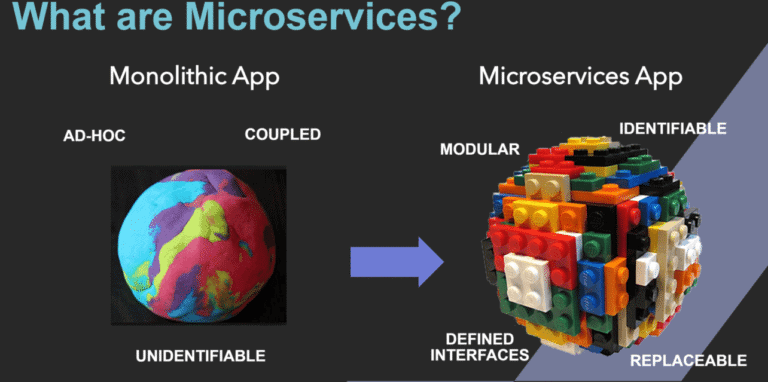2020 was the year of challenges for businesses around the world. While some businesses were able to respond quickly and successfully to this new reality, many struggled and lacked the flexible technologies and internal processes needed to cope with (almost) daily change.
By now, businesses need to focus on the key areas of their business where flexibility, agility and customer experience are key. Investing in technology innovation for long-term success will play an important role, especially in the supply chain industry, in 2021 and beyond. Pieter Van den Broecke, managing director Benelux and Germany at Manhattan Associates, believes in microservices and the cloud as key technologies.
Separate services
A microservices architecture is basically the latest version of the agile DevOps model that we have been hearing a lot about for the past five years (including Kubernetes and Docker developments). Microservices are intended to create technical flexibility by reducing the size of and implementation dependencies between the components of an application. Literally, ‘cut-up services’.
It can best be compared with Play-Doh versus Lego. With Lego blocks, you are able to add or remove features and functionalities very quickly. Whereas with Play-Doh, this is an impossible task.
A successful microservices architecture is more complex than traditional IT architectures and requires more effort and discipline to design, build and manage. However, it also has the potential to accelerate development cycles and support scalability. Whether for cloud-based workloads, persistent or sporadic peak periods, pragmatic transportation and delivery planning or simply distribution centre staffing challenges – all these aspects are crucial for supply chain resilience.
A more traditional, monolithic IT environment previously meant that businesses were often hesitant to make changes to a single application. This hesitation was due to fear of the entire application failing if a single feature or component failed.
The call for the cloud
The cloud and cloud-native applications are of enormous importance when creating flexibility, agility and scalability. When maintaining existing IT solutions requires too much attention, and problems with legacy systems and data storage arise, it is a hindrance. Businesses can no longer focus on their core business and find it harder to respond to the challenges of changing consumer behaviour or an unpredictable supply chain.
Cloud-native applications enable businesses to very quickly bring a (business) idea into production, allowing them to act, switch and innovate more quickly. The accompanying cloud architecture of these applications also works optimally for unpredictable workloads or peaks. Especially in a time when consumer behaviour is changing rapidly. Moreover, being cloud-native means that, as a business, you have the flexibility to deal with changes at a rapid pace and to add or remove features as required thanks to the modularity of the applications.
In conclusion, cloud-based technologies enable companies, and their supply chain networks, to adapt, innovate and implement solutions to meet all changing conditions and expectations. It also enables them to create a culture that encourages innovative ideas, not only within the IT environment but throughout the business. A flexible and agile approach is essential, especially in the retail and supply chain industry. As far as I am concerned, this is a must for all businesses that are looking ahead for the long term.
From slow response times to hindrances from legacy systems, these are shortcomings in all areas of a business that can be sorely missed. The advantages offered by microservices and the development of cloud-native solutions mean that a more flexible and responsive organisation is now more accessible than ever before. Therefore, flexibility and innovation are the keys to success – in this year and the years to come.
This is a submitted contribution by Pieter Van den Broecke, Managing Director Benelux and Germany at Manhattan Associates. You can find more information about the company’s capabilities via this link.
